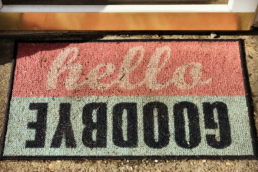This is a guest post from Gabe Cooper. Gabe is the Founder of Virtuous Software, a CRM and Marketing platform helping charities increase their impact. He is also the founder of Brushfire Interactive, co-founder of Shotzoom Software, and has a passion for creating market-defining software and helping charities re-imagine generosity.
How to Personalize Your Donor Communications
Most of the nonprofits we work with understand the importance of personalizing their donor communications. Donors are people, and they want to be treated like people… not just names in a database.
We all give to nonprofits for incredibly personal reasons. Often our favorite cause has impacted our lives, our family, or our community very directly. But sometimes, when we receive an email or call from our favorite nonprofit we get the feeling that they have no idea who we are or what we care about. This disconnect alienates donors and short-circuits generosity. In fact, studies show that 76% of donors who give to a nonprofit will never go on to give a second gift!
Many nonprofits feel paralyzed when faced with fixing this problem. They know that they need to better engage donors, but they don’t know where to start. At Virtuous, we provide technology to automate personalized donor communications and help you truly know your donors. That said, technology is only the tip of the iceberg. To be successful you need a plan to:
-
Get to know donors in a holistic way
-
Communicate in a way that is relevant to them, and then
-
Provide personalized opportunities to engage based on your donor’s individual passions and preferences
We’ve compiled a list of 5 simple steps to start personalizing your donor communications. (A similar process is used by the world’s top for-profit brands to tailor communications.) We believe that using these steps will help not only prepare you for the right technology, but also put you in a position to dramatically increase giving by building real relationships with donors.
1 – KNOW YOUR DONORS
The first step in building a relationship is getting to know someone and letting them get to know you. The best way see how your donors are experiencing your nonprofit is to gather up all brand touches on all channels that reach your constituents. List all the potential touchpoints your organization has today: events, emails, letters, staff conversations, referrals from other donors, etc.
2 – COMPILE A CHRONOLOGICAL CONSTITUENT VIEW
Once you’ve listed out all touchpoints, consolidate them into one single donor view. (Start by using a fake, generic donor.) Now begin to organize the touches chronologically. For example, most donors’ first interaction with your organization isn’t your “Presidents Club Dinner.” Most folks hear about you from a friend, attend a concert you’re sponsoring, see a blog post from a thought leader, etc. It can be tricky, but do your best to organize these touches into “first of the relationship,” “getting to know you” and “mature relationship.” This map will provide the framework for your donor journey.
3 – IDENTIFY 3-5 PERSONAS
As you move through this exercise, you should notice that a couple of distinct personas emerge. Personas are simply the different types of people you are reaching. For your organization, they might be “college advocates,” “concerned moms” or “seasoned donors seeking a legacy.” Create no more than 5 personas, or you’ll quickly spread yourself too thin. We also find it helpful to give each persona a name and personality to make them more real for your organization. For example, the “college advocate” might translate to “Braden, a junior at U of A who watches Netflix, uses Instagram, and is seeking meaning and a cause to attach himself to.”
4 – MAP YOUR CONTENT
OK, now to the fun part. Once you’ve established your personas, you need to pull together all the best content in the organization. Grab all of your videos, blogs, PDFs, curriculum, etc from all your departments. Next, eliminate the objectively bad content and do your best catalog the keepers. Many times, nonprofits have a hard time determining which content really resonates with constituents. If you are feeling really ambitious, we encourage sending your good content to 4-5 people in each of your personas to solicit open, honest feedback from the groups you’ll be communicating to.
Once this process is complete, you’ll need to map your content to its most natural persona AND its most natural place in the chronological constituent view that you established in step 2. There’s a good chance you’ll uncover some gaps that need to be filled (e.g. “Oh my gosh, we don’t communicate with new prospective Braden’s”). In that case, you’ll need to commission new content to fill these obvious gaps. We encourage you to use a spreadsheet to complete this mapping process.
Download the free content mapping spreadsheet
5 – CREATE YOUR PERSONALIZED CONSTITUENT JOURNEYS
Finally, you’ll want to update your internal communication plan to 1) tag each name with a persona and 2) re-work the relevant communications (emails, events, letters, etc.) to better reflect your new spreadsheet. You’ll want to not only include your relevant content in the right step in the donor journey, but you should also update any other copy and calls to action to reflect each person (“what would Braden need at this phase in his journey”).
This is where a good technology tool, like a Marketing Automation platform, comes in handy. Marketing Automation allows you to design and automate each donor journey in order to save your team time and hassle.
We know that updating your entire donor communications strategy can feel overwhelming. If you’re looking for a good place to start, we recommend beginning with a “Welcome Series.” Each of your new donors will likely fall into one of your new personas. If you can identify their persona, make sure that those first 5-7 touches over their first 45 days are optimized based on your spreadsheet. Welcoming a new donor in a more personal way can have a huge impact on giving, and it can be an easy way to kick start your personalized donor communication plan.
If you can help your organization move through these steps, we’re convinced that you’ll be well on your way to increasing giving. Give it a try and let us know how it’s going.
Related Posts
August 13, 2016
Nonprofits Leaving Billions on the Table Due to Fundraising Failures
Looking at the data after giving online…

